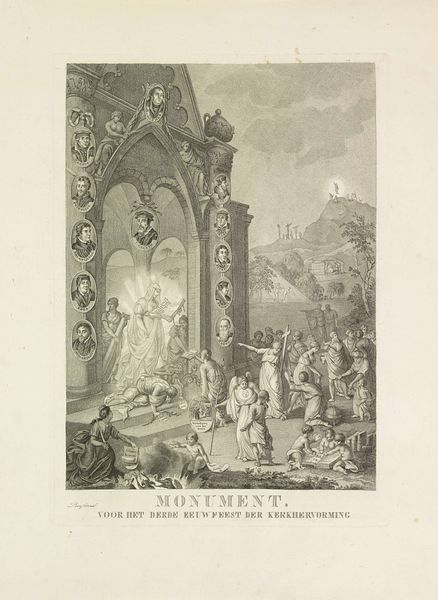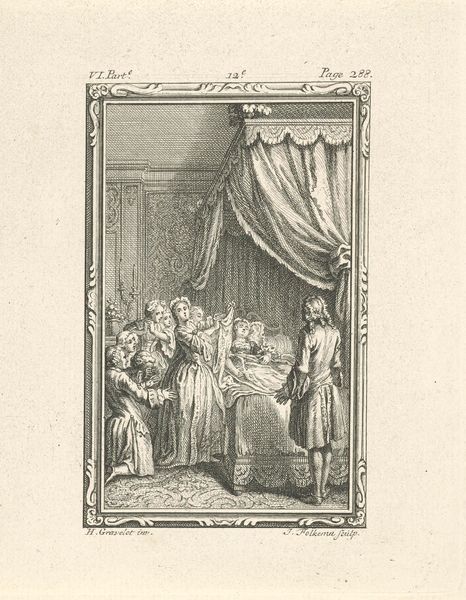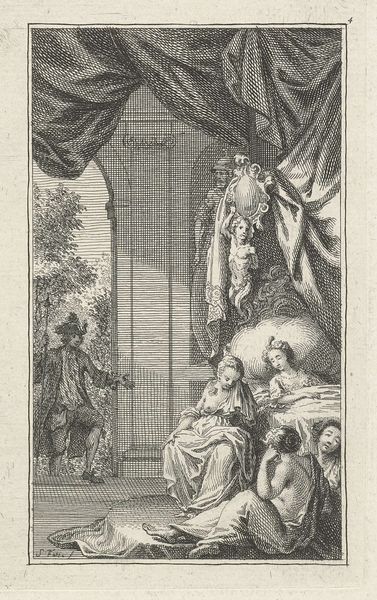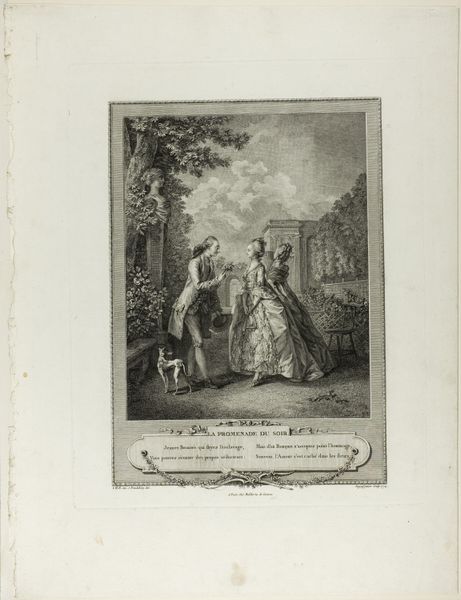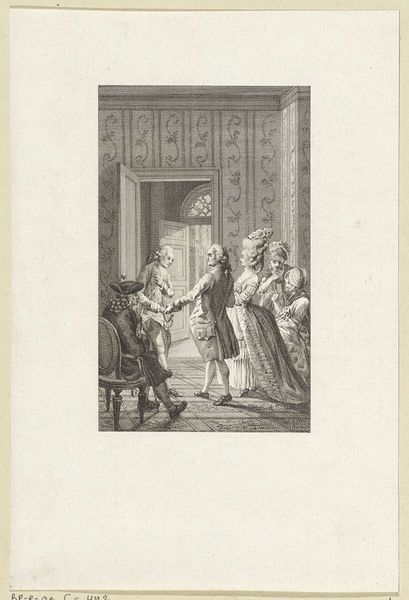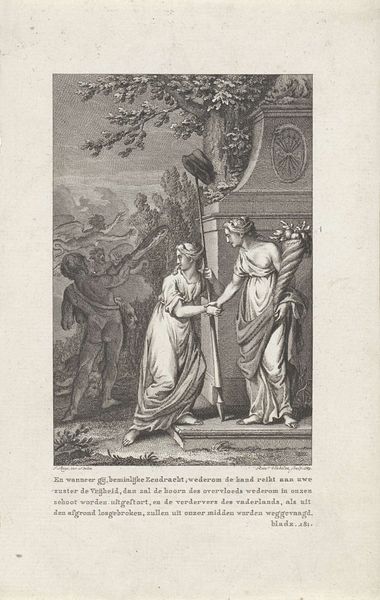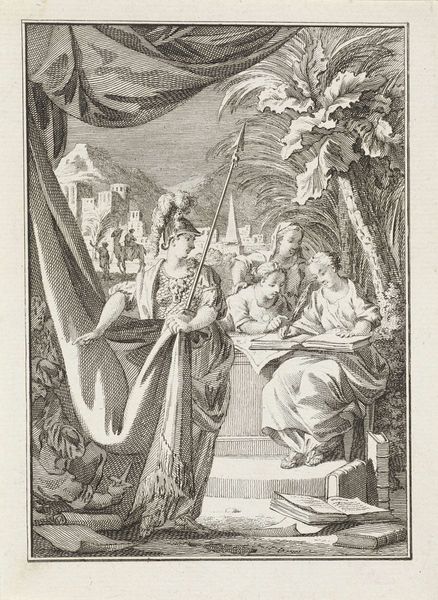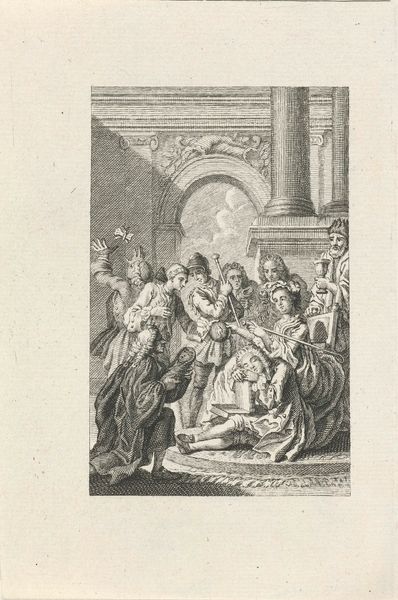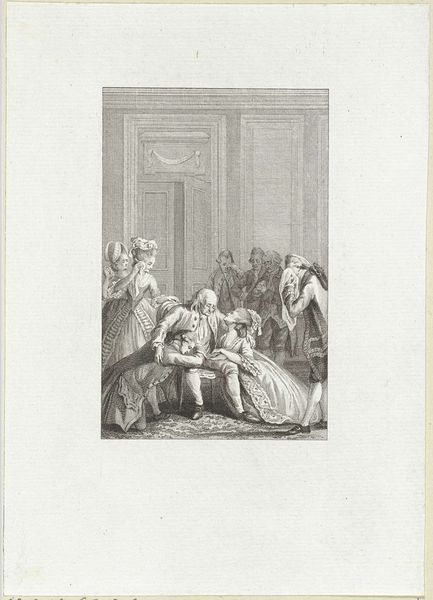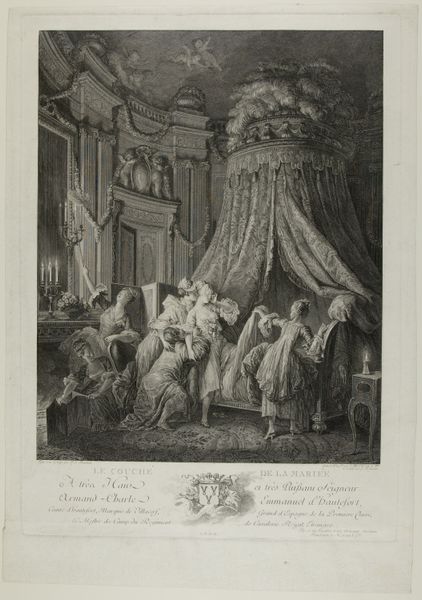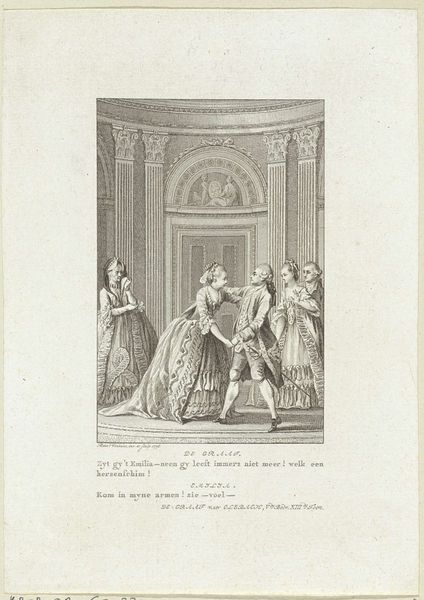
Dimensions: height 140 mm, width 87 mm
Copyright: Rijks Museum: Open Domain
Curator: Welcome. We’re standing before "Edelvrouw knielt voor graaf," which translates to "Noblewoman Kneeling Before a Count." Simon Fokke created this print in 1771. Editor: My first thought? The light! It feels staged, like a theatre scene. Everything is carefully arranged, leading your eye right to the Count. But look at the detail, especially in the rendering of fabrics and metalwork – how was that achieved through printmaking? Curator: Simon Fokke was well-regarded as an engraver. The clarity of line is striking for the period. Consider also the context; prints were often commissioned to reproduce paintings for wider audiences, playing a crucial role in disseminating artistic styles and narratives. This likely depicts a specific historical event or perhaps a scene from popular literature of the time. Editor: The process is really what grabs me here. Creating those tonal shifts and textures purely with lines – the amount of labor is significant. How many states of the plate might he have gone through to get this balance, this final image we see printed on paper? I wonder where the copper came from, who the artisans were preparing and treating the printing plates... it all adds layers of social meaning, beyond the subject matter. Curator: The 'who' is important; prints allowed for social commentary, reflecting or even shaping public opinion. Was this an act of loyalty being presented as an example to the population? Or maybe an example of a social code that dictated class relation at the time, what’s acceptable and what is not. It clearly demonstrates power dynamics that are not at play now in Western civilization. Editor: It certainly underscores the existing power dynamics. Though the narrative seems somewhat theatrical, focusing on the means of its production—the engraving tools, the copperplate, the printing press itself—adds another level to that analysis of the production, reproduction, and distribution of wealth and authority in 18th century Netherlands. Curator: Absolutely, and that layered approach offers modern audiences a deeper understanding of both the artwork's technical virtuosity and the broader socio-political messages it carries. Editor: Looking at the final work, knowing that its construction represents an incredible labor contribution, the detail renders this a compelling visual story about power, but told also through its method and its materials.
Comments
No comments
Be the first to comment and join the conversation on the ultimate creative platform.
